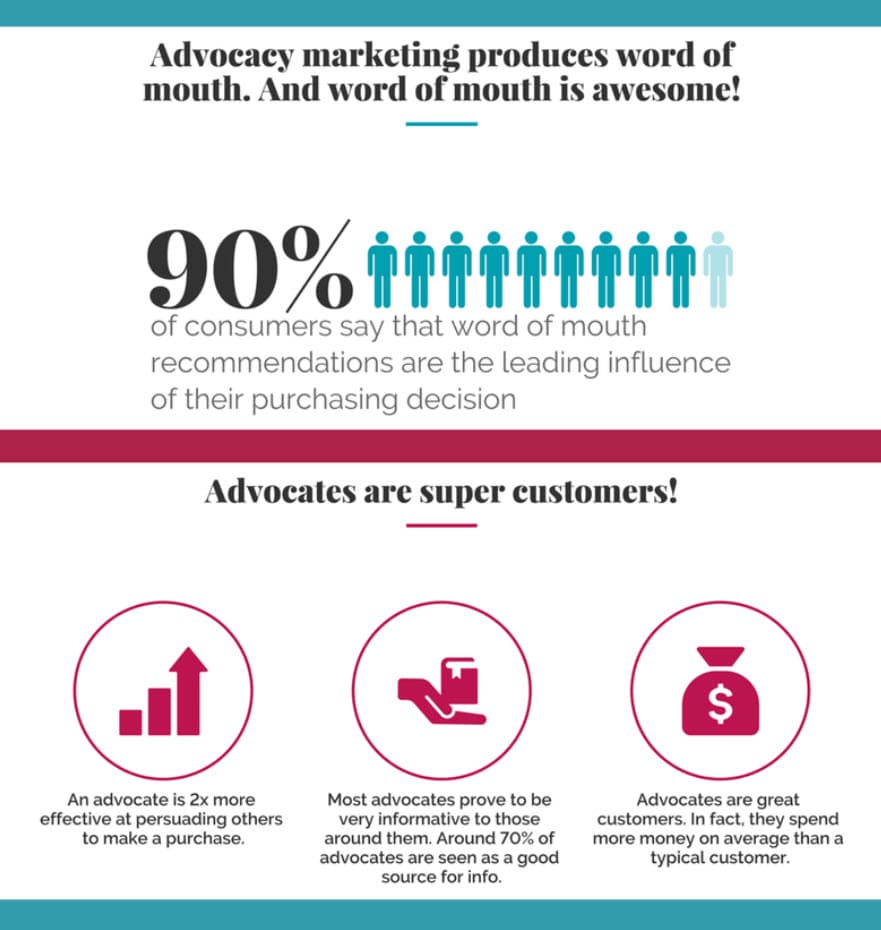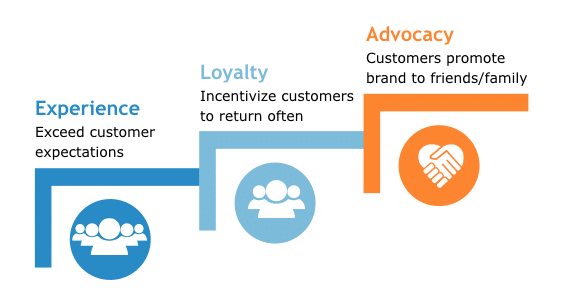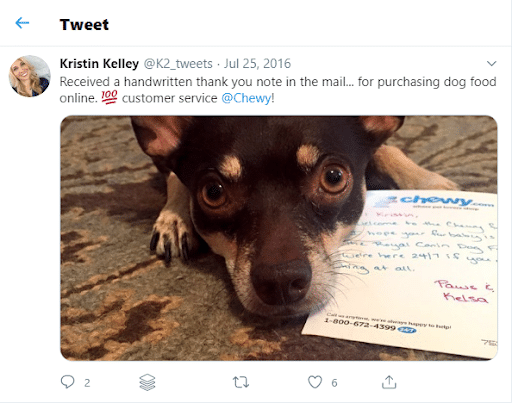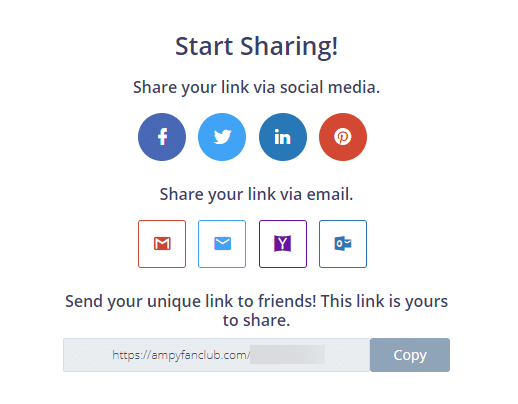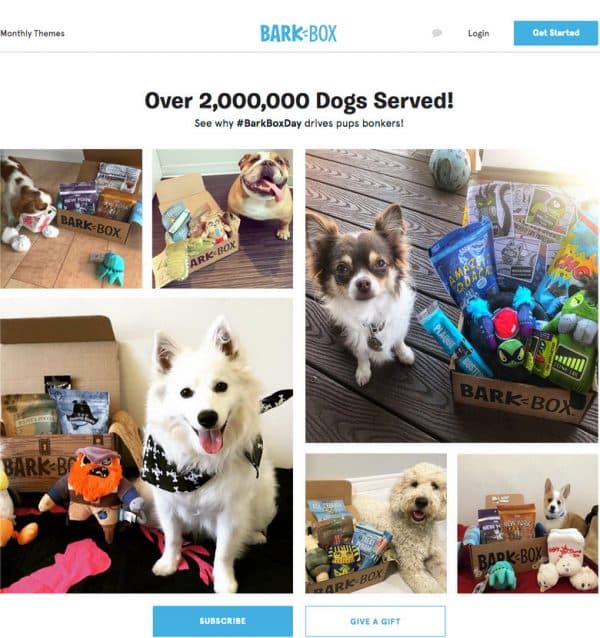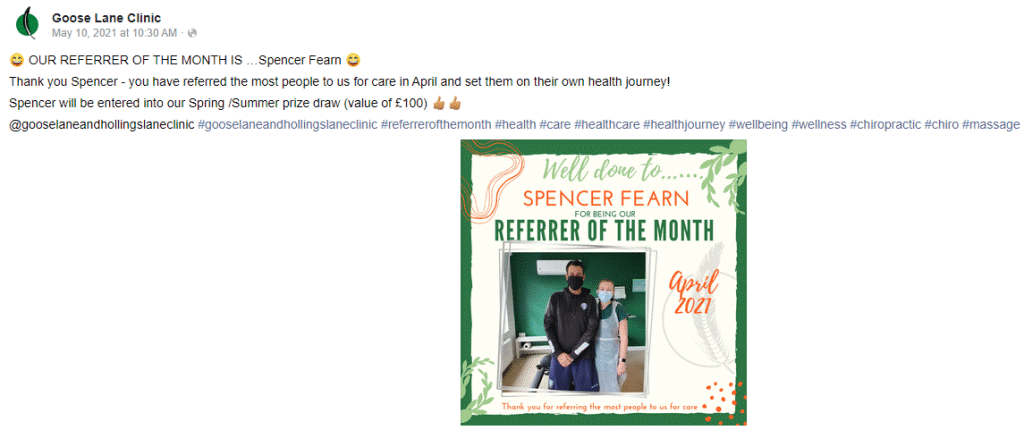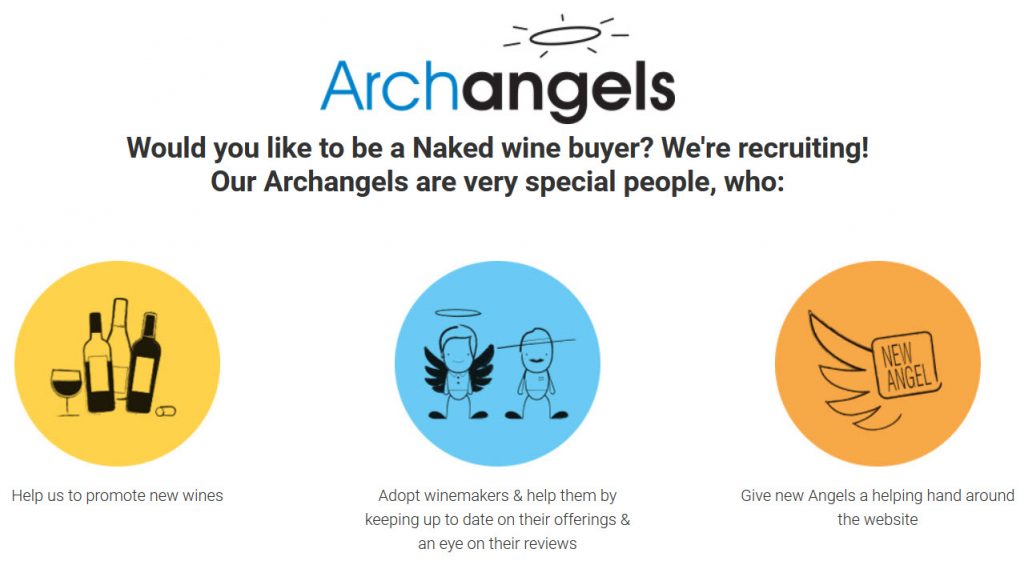Customer advocacy is powerful – according to Nielsen, 77% of consumers are more likely to buy a product after a friend or family member recommends it. With advocacy marketing (also called advocate marketing), you can generate more leads and grow your customer base thanks to the voices of your existing customers.
But how can you plan ahead to keep customers engaged in your business, so they’ll go the extra mile for you and be your advocates? This guide will help you create brand advocates who will always have your back, even if you face challenges.
What is advocacy marketing?
Advocacy marketing is a marketing strategy that involves encouraging your customers to advocate for – or spread the word about – your brand and its products or services.
Customer advocacy can happen on social media, blogs, review sites, and via one-on-one sharing (when customers directly tell a friend about you). If they’re talking about you positively, that’s advocacy!
The goal of advocacy marketing is to get word-of-mouth marketing to occur frequently, and create reliable promoters. This marketing strategy motivates loyal existing customers to speak on your behalf, spread the word about your brand and its products, and create a ‘buzz’ for your company. It’s almost like a megaphone for your business.
What motivates customers’ advocacy?
Advocates typically choose to share on their own, simply because of how much they love the business. Their enthusiasm and excitement motivates others to check out the brand or product for themselves. Sometimes, though, brands will use incentives to motivate this advocacy, as part of an advocacy marketing strategy.
Types of advocacy marketing
Any way that you mobilize your customers to spread the word about you counts as an advocacy marketing campaign. This includes:
- Starting a referral program
- Encouraging customer reviews
- Creating user-generated content campaigns to mobilize social sharing
- Fostering any word-of-mouth marketing from your customers
Advocacy marketing vs. influencer marketing and ambassador marketing
What makes advocacy marketing different from other common social media strategies, like influencer marketing or ambassador marketing? Advocacy marketing is not as structured as these other marketing types. It’s more about a brand providing an excellent product or service, and then recognizing those who love the brand and share it with others.
An advocate can be any loyal customer who loves your brand, and who is willing to share it with others. Advocates aren’t formally recruited, and they aren’t bound by contracts like influencers and ambassadors are. They can share as often as they like. Of course, you can always recruit your most active advocates as formal ambassadors later on.
Why are brand advocates important?
Brand advocates can be awesome for your business. All you have to do is provide them with a product they love and stellar customer service – they take care of the rest.
Brand advocates are respected among their peers: Usually, advocates are respected in their community or network. This doesn’t always mean an advocate has a large number of followers. Far more important is that the advocate’s friends and followers trust the advocate’s opinion, far more than they trust ads and messages that come straight from your brand. So, these peers are intrigued to try the brand or product for themselves, and may also see how they can benefit from it.
Let’s take a look at this from the perspective of an advocate. Perhaps the person has a blog, social media account, or website that caters to a certain type of individual. Or maybe they just have a close network of friends who respect their advice. Usually, the people who follow the advocate are of a similar demographic, have similar interests, or seek guidance, ideas, and advice from the advocate.
The advocate will mention your product to their friends and followers. This doesn’t just create brand awareness – their peers are more likely to try the product, since someone they trust has spoken highly of it. And as an added bonus, peers who do purchase from you are more likely to stay loyal due to the trust they place in the advocate. This leads to increased customer retention.
Advocates will share wherever they can: They have no shame in sharing you everywhere. If they have a blog, you’ll be on it. They’ll share you on their social sites, and they will share you in person. And if you’ve got a customer referral program, they’ll likely to be one of your top sharers. Whenever it makes sense to bring you up, consider it done.
Advocates will share because they love you, without expecting an incentive: Yes, you read that correctly. Advocacy marketing is extremely cost-effective. Most advocates will share you just because they genuinely love your brand or products, and want to see you succeed. So, keep doing your job well, and you’ll get promoted for free or nearly free. Awesome, right?
Advocates will provide reviews: Another reason advocates are great is that they will happily give you stellar online reviews. Most of the time you won’t even have to ask, because a true advocate will have done so already. We all know the importance of a good review, so this one is great news!
The thing is, people, search for reviews before committing to a product. Whether it be a software program, electronic device, or even a type of beauty cream, people watch and read reviews of the product online, in addition to getting advice from their family and friends. In a study by Nielsen, it was suggested that a whopping 66% of people trust the opinions of consumers found online. Meaning, advocate marketing can definitely drive new customers.
How do you find brand advocates?
Because customer advocacy marketing is based on trust, it can seriously benefit a company. The best news is that a customer advocacy program is actually quite inexpensive. It’s not like influencer marketing, which is based on influencers having a vast amount of social media followers. Rather, advocate marketing is more about having someone who actually likes your brand.
In fact, advocate marketing is also the easiest to use, because it utilizes the people who are already promoting you. Think of it as peer to peer marketing. You’re having loyal customers engage potential customers in buying your products. Buyers simply trust other people in their situation, or in their network. This is the exact reason peer to peer marketing and customer advocate marketing work so well.
To make things even easier, you can use an advocate marketing software to find your perfect match.
Where are your advocates?
You can usually find brand advocates in the following places:
- Social media: Look at who is talking positively about you on the web, whether it be on social media or a positive rating on a review site. These people are already talking highly of you, so make them advocates.
- Recent conversations: Think of recent phone calls, or face to face interactions, where the customer expressed gratitude or excitement for your brand. These customers are also great advocates.
- Email correspondence: You may have had a few glowing emails come in. Think about it, those who want to provide you with a positive testimonial make awesome advocates.
- NPS scores: Perhaps you sent out a recent NPS survey or other customer satisfaction survey. Turns out these people basically told you that they would recommend your brand to others.
How do you create brand advocates?
It’s a lot easier to create advocates than find them. But, you can’t just push a few buttons and expect the advocacy marketing magic to happen. You have to do a little work, and turn customers into advocates. Here are some ways you can better your business and produce loving advocates.
1. Listen to customer concerns
What’s the biggest secret behind building an army of happy customers? Simply listen to them. If they feel like their voice is heard, you start tapping into relationship building and their customer loyalty ramps up. As a result, you should start to see some advocates emerge. Then, it’s only a matter of time until advocacy marketing will start. This is one of the easiest ways to boost customer satisfaction and advocacy!
2. Take action when customers give feedback
Don’t just listen to feedback without acting on it. Instead, walk the walk. Sure, some feedback you get can roll off your shoulders. However, once you start hearing similar feedback, or see a pattern of feedback, it’s time to take action. Your customers use your product, so be sure you give them what they want. They are the ones who can help you build something amazing.
Listen to customers, and take action, by:
- Responding to, and applying, information from reviews
- Replying to, and applying, information from social media comments
- Asking for, and implementing, feedback from customer surveys
3. Try to be ahead in the field
Think of Apple. The brand has customers practically waiting in lines wrapping around buildings when new phones come out. These people are advocates who stand by Apple because it offers a brand experience that they feel they can’t get elsewhere. Provide a product or service that people can’t live without, or that is clearly a cut above the rest, and you’ll likely gain quite a few advocates.
4. Provide exceptional customer service
You’ll also need to deliver on the customer experience front – customers will only recommend you if they’re happy with the service they’ve received. Surprising and delighting customers with exceptional customer service, and creating positive experiences, will also pull you ahead of the pack. Engage with customers on a personal level, and always provide a high standard of customer care when you interact with them.
5. Always thank your customers
It never hurts to tell your customers how thankful you are for their feedback and business. Whether you thank them personally during a call, shout them out on social media, or write a thank-you note to send with their order, take the time to show your gratitude. Even if they call in to complain about something, take the time to listen, address their concern, and then thank them for their feedback. A small thank you can have a huge impact.
6. Be customer-centric in everything you do
Putting your customers first is well worth it. If you make the customer feel important and meet their needs, they will develop a sense of loyalty for you. A customer-centric culture is key for a unified company. Plus, it probably means internal relationships are thriving too. So, make all your decisions through the eyes of your customers. (Learn more about creating a customer-centric strategy.)
How to run an advocate marketing program
What can you do to make the magic happen and spark up an advocacy program? Obviously, you need to consider the customer journey as it will lead your customers to become brand loving advocates. If you want your customers to effectively share your brand’s message, you need to take steps to prime the behavior. Here are a few tips on creating a sustainable advocacy marketing program.
1. Select the right advocates to launch your efforts.
Decide how you will choose advocates is probably one of the most important aspects of an advocate program. Yes, your goal is to turn all your customers into advocates, but some customers already have a head start. You have to find the right people to share your message and launch your advocacy.
Start by looking at your current customers, and find the ones that seem to be most engaged with your brand (the ones who have purchased from you the most, talked about you the most, or both). They’re the perfect people to reach out to first.
2. Look at the bigger picture.
Do you want to create long-term relationships, or is the goal to get a big buzz going? If you need to spread the word quickly, you may tap into some active creators with close networks. Of course, we aren’t talking about celebrity endorsements – instead, you’ll mobilize your customers with social media and blogging prowess. Since they love your brand and know how to get the word out, they’ll create a buzz relatively quickly.
Searching for long-term commitment? Start providing excellent customer service and building your customer relationships. The more effort you put in, the more effort your customers will put out. Let your top customers know they are important and give them a little VIP treatment. That should get them talking about you on a consistent basis.
3. Choose how you want advocates to engage with future prospects.
First off, you’ll need to decide what kind of program or strategy you’ll use to mobilize advocates. Do you want to run a referral program, encourage user-generated content, or make a concerted effort to ask for reviews? Or, will you create a program where customers are encouraged to share certain information with prospects, like unique selling points or new product information.
Next, will you have some sort of platform where all your advocates can engage with each other and you? This can help you get the word out more quickly and make sure that advocates share an accurate, moving message. Alternatively, you may only want advocates to engage on their own, with messages they craft themselves.
Whatever you choose, you have got to have the tools in place for your advocates to, well, advocate. Plus, you need some way of tracking their engagement. That can be tracking it on a platform (such as a referral marketing platform), or having them send you snapshots of their engagement on their own. In the case of social sharing, you might also use brand mention software to monitor when customer-advocates mention your brand.
4. Make advocacy easier.
It should be as easy as possible for customers to share your brand. A referral program, with links that customers can share in one click, is one way to streamline the sharing process. Even better? Include buttons that let customers share instantly on a variety of channels, like email and multiple social platforms.
Branded hashtags are another way to make sharing more intuitive. They stick in customers’ minds, and will make sure that their sharing of your products or services gets tied back to your brand.
And if you want customers to share what you’ve created directly, then include social sharing buttons on your website, (especially within your content).
Of course, customer advocates should also be clear on your brand story, values, and unique selling points. This way, customers will have a stronger idea of what to say in their advocacy, and won’t struggle to come up with their messages.
5. Recognize advocates for their efforts.
Yes, people become advocates because they like your business, not because they have been paid to do so. Still, though, an advocacy incentive will help keep customers motivated to share often, keep them loyal to your brand, and show how much their advocacy marketing efforts mean to you.
Brand advocates deserve appreciation. Whether you give a physical reward, a reward to be used in your store (like a gift card), or a little bit of public recognition, it can go a long way.
For example, whenever a customer makes a successful referral, or shares with friends on social media, you could send the advocate store credits, free products, or swag. You could also express how awesome top advocates are in a blog spotlight, or give them an advocate shout-out on social media.
This type of appreciation doesn’t need to occur all the time, but it should occur frequently enough that advocates want to continually promote you. Just remember that organic love is always better and more genuine than paid love. So, strike a balance if you do decide to give advocates an incentive.
Remember that the way you made a customer an advocate will be the main way you keep them active in your advocate marketing program. Cultivate a relationship with advocates, and let them know you appreciate their help.
5. Decide whether you’ll use advocate marketing software.
Advocate marketing software can make running a program so much easier. Plus, it can provide you with the perfect platform to keep advocates engaged. In fact, many advocate marketing communities use software because it helps gamify the process.
There are several types of advocacy software:
- Referral software, like Referral Rock software, will let you run a referral program, a type of customer advocacy program that gives customers trackable sharing links. When their sharing turns friends into loyal customers, the software will automatically issue rewards to your advocates.
- Review generation software, like Get More Reviews, will help you ask for and collect valuable reviews from your best customers.
- UGC software, like Bazaarvoice, will let you find, collect, and repurpose the user-generated content your customers are already creating.
Advocacy marketing examples: How companies create advocates
How do Naked Wines and Nike run their top-notch advocacy marketing programs? Let’s dive into these advocate marketing case studies.
Naked Wines
Naked Wines is a solid example of an advocacy marketing program example. They have a group of super customers that they call “Archangels.” The company chooses their top customers who have used word of mouth or provided some other sort of value to them, to promote new wines, help out winemakers, and introduce new users to the website. Then, it rewards the Archangels with special events, samples of new wines, and membership into a private group where all the Naked Wines insider info gets released first. Oh, and the Archangels are a pretty exclusive group, since there is apparently a long wait list. This proves that Naked Wines has a lot of fans and is doing something right.
Nike
Nike is another great advocacy marketing program example. Nike+ knows their customers love a good competition. So, they built a community that encourages this behavior and focuses on their other love… sports. The platform boosts customer engagement by hosting challenges (a great use of gamification). Customer-advocates can then share results of these challenges on their social profiles, hence providing a direct link to Nike and showing off their love for the brand.
In closing
Many of the brands we hear the most about are the ones that make special connections with their customers. They are able to turn their customers into advocates because they motivate brand advocacy to happen. Again, this happens by listening to customers, acting in their best interest, and providing a personal touch to each interaction.
To add on to that, creating an advocacy marketing program or using similar types of marketing campaigns can further boost these relationships and cultivate organic word of mouth.
Another related type of advocate marketing is employee advocacy. Learn about this powerful form of marketing in our employee advocacy guide.

